By InvestMacro
The latest update for the weekly Commitment of Traders (COT) report was released by the Commodity Futures Trading Commission (CFTC) on Friday for data ending on January 3rd.
This weekly Extreme Positions report highlights the Most Bullish and Most Bearish Positions for the speculator category. Extreme positioning in these markets can foreshadow strong moves in the underlying market.
To signify an extreme position, we use the Strength Index (also known as the COT Index) of each instrument, a common method of measuring COT data. The Strength Index is simply a comparison of current trader positions against the range of positions over the previous 3 years. We use over 80 percent as extremely bullish and under 20 percent as extremely bearish. (Compare Strength Index scores across all markets in the data table or cot leaders table)
Here Are This Week’s Most Bullish Speculator Positions:
Soybean Meal
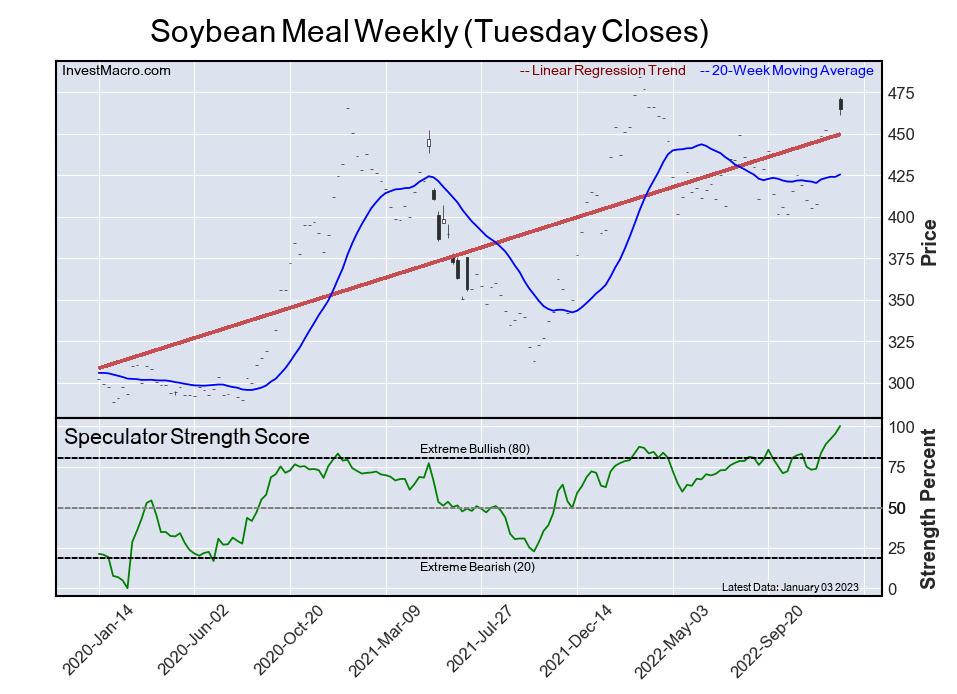
The Soybean Meal speculator position comes in as the most bullish extreme standing this week. The Soybean Meal speculator level is currently at a 100.0 percent score of its 3-year range.
The six-week trend for the percent strength score totaled a gain of 27.0 this week. The overall net speculator position was a total of 156,568 net contracts this week with a rise of 9,695 contracts in this week’s speculator bets.
Free Reports:
 Download Our Metatrader 4 Indicators – Put Our Free MetaTrader 4 Custom Indicators on your charts when you join our Weekly Newsletter
Download Our Metatrader 4 Indicators – Put Our Free MetaTrader 4 Custom Indicators on your charts when you join our Weekly Newsletter
 Get our Weekly Commitment of Traders Reports - See where the biggest traders (Hedge Funds and Commercial Hedgers) are positioned in the futures markets on a weekly basis.
Get our Weekly Commitment of Traders Reports - See where the biggest traders (Hedge Funds and Commercial Hedgers) are positioned in the futures markets on a weekly basis.
Bloomberg Commodity Index
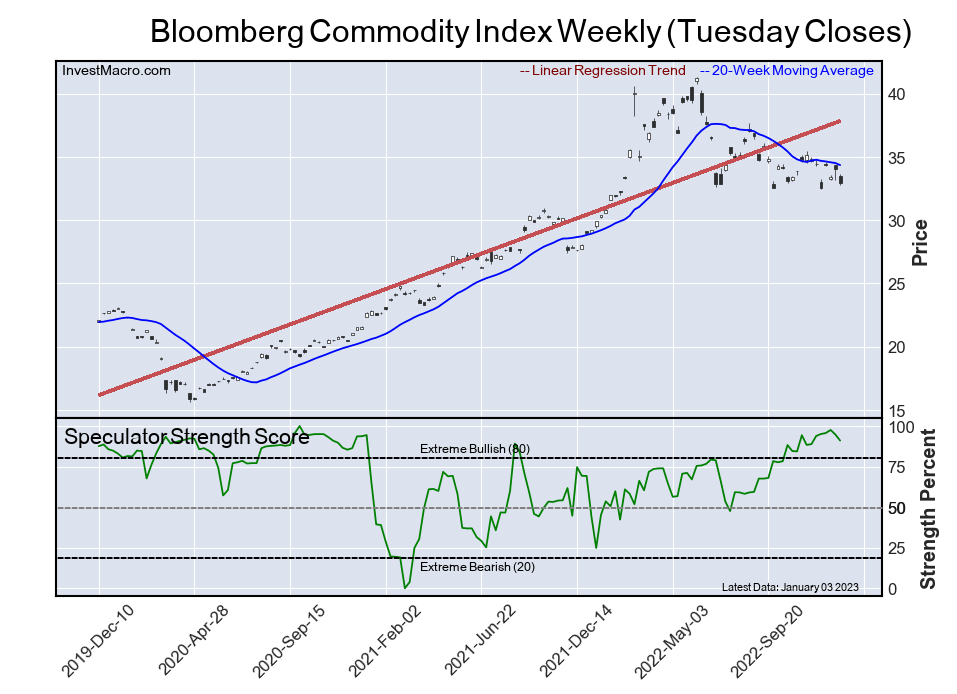
The Bloomberg Commodity Index speculator position comes next in the extreme standings this week. The Bloomberg Commodity Index speculator level is now at a 91.0 percent score of its 3-year range.
The six-week trend for the percent strength score was a small gain of 2.2 this week. The speculator position registered -4,301 net contracts this week with a weekly decline of -980 contracts in speculator bets.
Bitcoin

The Bitcoin speculator position comes in third this week in the extreme standings. The Bitcoin speculator level resides at a 83.7 percent score of its 3-year range.
The six-week trend for the speculator strength score came in at -5.5 this week. The speculator position was 389 net contracts this week with a change of -304 contracts in this week’s speculator bets.
Brazil Real
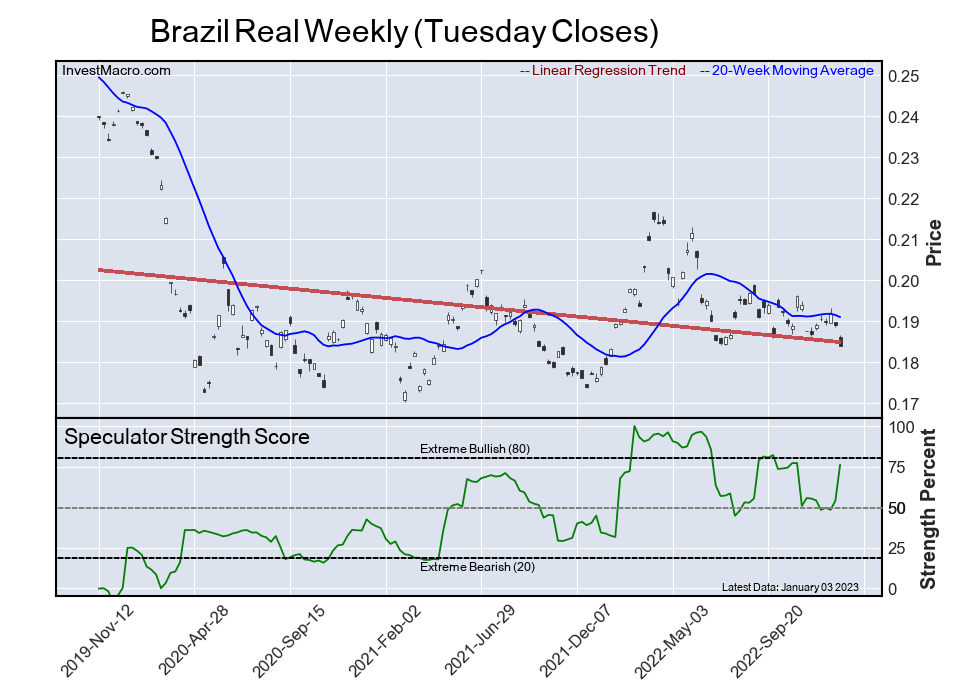
The Brazil Real speculator position comes up number four in the extreme standings this week. The Brazil Real speculator level is at a 76.1 percent score of its 3-year range.
The six-week trend for the speculator strength score totaled a change of 20.9 this week. The speculator position was 28,211 net contracts this week with a rise by 20,796 contracts in this week’s speculator bets.
Nasdaq
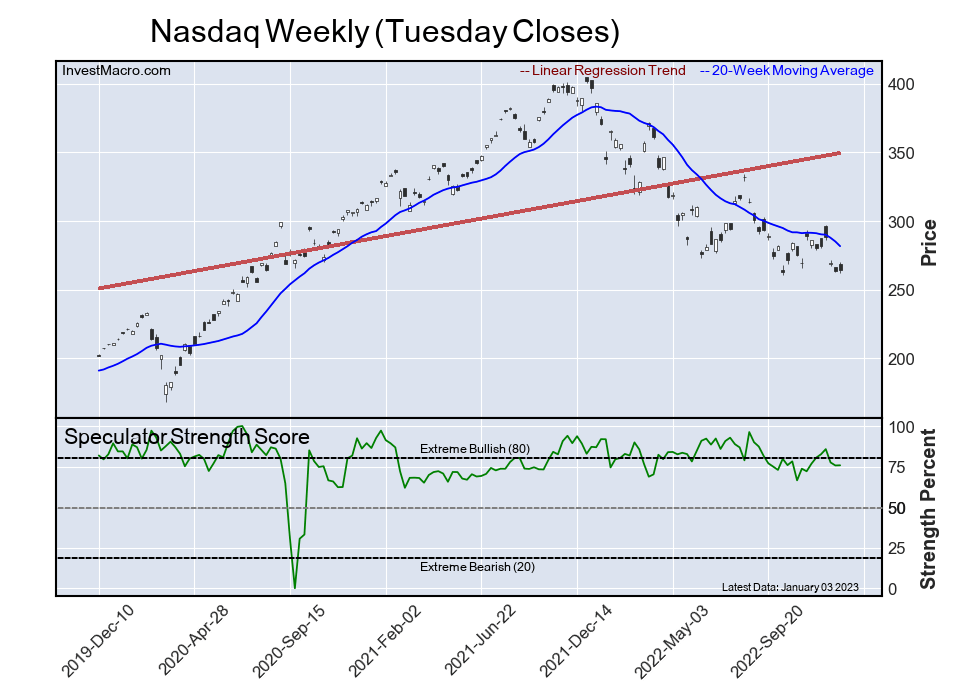
The Nasdaq speculator position rounds out the top five in this week’s bullish extreme standings. The Nasdaq speculator level sits at a 75.8 percent score of its 3-year range.
The six-week trend for the speculator strength score was -0.9 this week. The speculator position was 1,362 net contracts this week with a small gain of 190 contracts in this week’s speculator bets.
This Week’s Most Bearish Speculator Positions:
Ultra 10-Year U.S. T-Note

The Ultra 10-Year U.S. T-Note speculator position comes in as the most bearish extreme standing this week. The Ultra 10-Year U.S. T-Note speculator level is at a 0.0 percent score of its 3-year range.
The six-week trend for the speculator strength score was -2.1 this week. The speculator position was -113,357 net contracts this week with a shortfall of -30,091 contracts in this week’s speculator bets.
Mexican Peso
The Mexican Peso speculator position comes in next for the most bearish extreme standing on the week. The Mexican Peso speculator level is at a 3.3 percent score of its 3-year range.
The six-week trend for the speculator strength score was -51.0 this week. The overall speculator position was -56,376 net contracts this week with a decrease of -4,650 contracts in this week’s speculator bets.
WTI Crude Oil
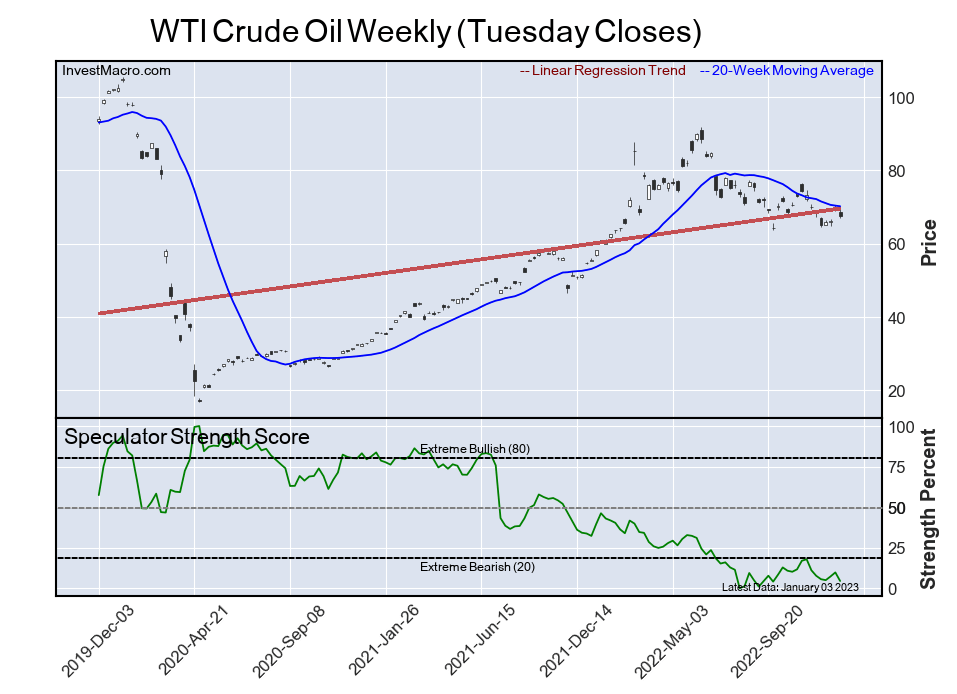
The WTI Crude Oil speculator position comes in as third most bearish extreme standing of the week. The WTI Crude Oil speculator level resides at a 4.5 percent score of its 3-year range.
The six-week trend for the speculator strength score was -6.6 this week. The speculator position was 227,607 net contracts this week with a drop by -20,011 contracts in this week’s speculator bets.
5-Year Bond

The 5-Year Bond speculator position comes in as this week’s fourth most bearish extreme standing. The 5-Year Bond speculator level is at a 4.9 percent score of its 3-year range.
The six-week trend for the speculator strength score was -16.4 this week. The overall speculator position was -652,919 net contracts this week with a small rise by 2,609 contracts in this week’s speculator bets.
Wheat

Finally, the Wheat speculator position comes in as the fifth most bearish extreme standing for this week. The Wheat speculator level is at a 7.5 percent score of its 3-year range.
The six-week trend for the speculator strength score was -4.7 this week. The speculator position was -32,291 net contracts this week with an increase by 3,998 contracts in this week’s speculator bets.
Speculators or Non-Commercials Notes:
Speculators, classified as non-commercial traders by the CFTC, are made up of large commodity funds, hedge funds and other significant for-profit participants. The Specs are generally regarded as trend-followers in their behavior towards price action – net speculator bets and prices tend to go in the same directions. These traders often look to buy when prices are rising and sell when prices are falling. To illustrate this point, many times speculator contracts can be found at their most extremes (bullish or bearish) when prices are also close to their highest or lowest levels.
These extreme levels can be dangerous for the large speculators as the trade is most crowded, there is less trading ammunition still sitting on the sidelines to push the trend further and prices have moved a significant distance. When the trend becomes exhausted, some speculators take profits while others look to also exit positions when prices fail to continue in the same direction. This process usually plays out over many months to years and can ultimately create a reverse effect where prices start to fall and speculators start a process of selling when prices are falling.
Article By InvestMacro – Receive our weekly COT Newsletter
*COT Report: The COT data, released weekly to the public each Friday, is updated through the most recent Tuesday (data is 3 days old) and shows a quick view of how large speculators or non-commercials (for-profit traders) were positioned in the futures markets.
The CFTC categorizes trader positions according to commercial hedgers (traders who use futures contracts for hedging as part of the business), non-commercials (large traders who speculate to realize trading profits) and nonreportable traders (usually small traders/speculators) as well as their open interest (contracts open in the market at time of reporting). See CFTC criteria here.

- The Mexican peso strengthened to a 6-month high. Natural gas prices fell to a 5-month low Apr 25, 2025
- EUR/USD Stuck in Consolidation: Rumours Abound, but Facts Remain Scarce Apr 25, 2025
- The focus of investors’ attention remains on the US tariff policy Apr 24, 2025
- Gold’s Downturn Won’t Last: Global Risks Remain Elevated Apr 24, 2025
- IMF warns that US tariffs portend a slowdown in global economic growth Apr 23, 2025
- Pound Hits Fresh High Against the US Dollar Before Correcting: What’s Driving GBP/USD? Apr 23, 2025
- Trump lashed out at the US Federal Reserve chief Jerome Powell with criticism. Energy prices are falling Apr 22, 2025
- EUR/USD Hits Three-Year High as US White House Policy Concerns Mount Apr 21, 2025
- Today is Good Friday — most financial markets will be closed Apr 18, 2025
- EUR/USD in Equilibrium: Quiet Trading Expected on Good Friday Apr 18, 2025